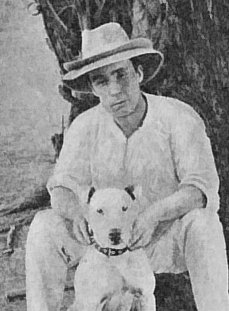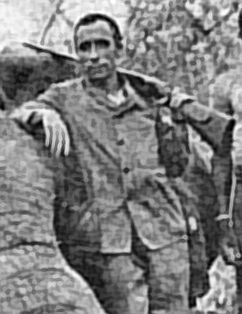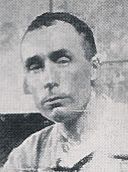View entry
Name: SUTHERLAND, James H. (Capt.)



Birth Date: 1872 Glasgow
Death Date: 26 June 1932 Yubo, Sudan
Nationality: British
First Date: 1903
Last Date: 1932
Profession: For many years an Assistant on the Longonot Estate near Naivasha and then became a big-game hunter. In 1913 on staff of the Governor, Sir Henry Belfield
Area: Naivasha, Nairobi, Kisii
Married: 1894 Marion Ferguson
Author: 'Adventures of an Elephant Hunter'
Book Reference: Gillett, Best, Gethin, Perkins, Nature, Kill, Rundgren, Breath, Hut, North, Playne, Red 22, Into Africa, Elephant, Kingsley-Heath, Medals, Chandler, Red Book 1912
War Service: Chief Intelligence Officer to Gen. Northey through EA Campaign
School: Edinburgh and Stornoway
General Information:
Best - acquainted with Colonel Cody - Buffalo Bill
Gethin - 1921 - '..... on returning to Kisii I found a very small tent pitched near my banda. A funny little man who more resembled an ape than a man, came up and introduced himself as Jimmie Sutherland, an elephant hunter. Jimmie was a wonderful character. He said he had shot over 2000 elephant besides being a professional boxer, and was Kid Macoy's sparring partner when Macoy was training for the world heavyweight championship. Jimmie had been all over Africa shooting elephant, and just got out of GEA in time before war broke out. He was a great man for keeping fit and used to do physical jerks every morning outside his tent, much to the amusement of the natives, who thought he was quite mad. I had many good safaris with Jimmie and was with him when he shot an elephant carrying 120 lb. tusks, within 10 miles of Kisii Boma. Jimmie left Kisii and went to French Equatorial Africa, where he became totally blind and died some years later.'
Perkins - ... 'Another opinion that commands respect is that of James Sutherland, whom I knew very well and last saw when he stayed with me the night before I had my first bout of blackwater fever, in September 1923 ... He wrote:- "With regard to the risk attendant on hunting various kinds of big game, all my experience tends to confirm me in the opinion that the pursuit of the elephant is, without doubt, the most dangerous. Second, and on a par, I would classify buffaloes and lions; third, leopards. In comparison with this very little risk attaches to the hunting of the rhinoceros."
Nature - was once picked up by an elephant, hurled over the beast's head, landed on its back, and slipped down its tail.. He followed the elephant and killed it.
Kill - was, perhaps, the greatest of all modern professional elephant hunters. His only peers were "Karamoja" Bell, and Arthur Neumann. Sutherland had been hunting elephants for something like 40 years when he died of dysentery in Central Africa. He had a record in four figures, all shot with his own hand.
Rundgren - hunting elephants since 1902. An ex prize fighter he went to S. Africa in 1896. In 1905 he fought for the Germans in suppressing the maji-Maji insurrection in GEA and was awarded the Iron Cross. He had many narrow escapes. He was awarded the MC for his service in British Intelligence during WW1. Later he returned to elephant hunting though past his middle forties. He hunted in the Belgian Congo, Uganda, and the Sudan on special licences, which were obtained for him by the General Officer Commanding the British Forces in EA. On the expiry of these licences he went up into the Oubangui Province of French Equatorial Africa, the one place that remained where licences were issued on which an unlimited number of elephants could be killed. The province had become the focal point of the last of the ivory hunters, some of whom were later to become well known in wild-life circles, like Major G.L. 'Miguu' Anderson, Alan Black, Mickey Norton, Pete Pearson, George Rushby and Capt. R.J.D. 'Samaki' Salmon. When at last the French stopped issuing licences in Oubangui in 1929 a few diehards took to ivory poaching, which for a while acquired a raffish glamour. But the following year the price of the commodity fell to below 10/- a pound, and one by one these poachers became game wardens or white hunters, and Sutherland died.
Playne - Longonot Ltd. - The splendid prospects of the wool industry in BEA brought about the formation of Longonot Ltd., all the shareholders of which are in the country. The Longonot Estate consists of open plains, and at the back of the property is an extinct volcano, "Longonot", from which the farm and company get their name. There are 6 miles of lake frontage, and wells (3 or 4) are being sunk on the back of the farm ........ The farm, 9 miles from Naivasha, is 20000 acres in extent. The managing director and local manager is Mr F.S. Clarke, who was born in New Zealand and came to BEA in 1905. He is assisted by Mr J.A. Sutherland. .....…..…
Into Africa - The elephant hunter Sutherland, on the other hand, believed in alcohol, not water. 'To endure month in month out, year in year out, the arduous work of elephant hunting in a hot and enervating climate, considerable quantity of alcohol is absolutely essential to my physical well-being.' He drank whisky-and-soda and half a bottle of port each evening. He was a kind of bellwether ………..
Elephant - Captain "Jim" Sutherland, who had shot over a thousand elephants, and whose death occurred last July when hunting in Africa, lived as an Ivory King. In the old pre-War days he used to safari into the wilds with as many as 800 to 1000 porters, men women and children; his tents were made of silk, and from his main base to his different hunting areas he had organised relays of hammock boys who carried him at a run all the way. His Native nickname was "Ngongonjaa." Most of his hunting was done in what is today Tanganyika Territory, in which, as some recompanse for the valuable services rendered during the Maji-Maji Rebellion of 1905-6, the Germans gave him carte blanche to shoot; of that he took the fullest advantage.
Kingsley-Heath - Was lethally poisoned by a recalcitrant member of his staff. Buried on the west bank of the Nile. His grave was refurbished by Tony Sanchez-Arino.
Medals - East African Intelligence Department - John A. Sutherland, EAMR, No. 477, Private ?
Chandler - To Sutherland, elephant hunting was a grand affair involving many porters and their women and virtual tent cities. Some of his safaris had as many as 800 members. He later was unfairly depicted as an 'ivory king' in the popular press, which claimed he was carried about from elephant to elephant in a machila. This story possibly started later in his career when he was recovering from the effects of poison. Another canard circulated about Sutherland was that he supposedly took credit for tuskers that his African retainers had shot. Yet another story had it that the German East African government gave Sutherland an Iron Cross plus unlimited license to kill elephant in return for services rendered in the 1905 Maji Maji rebellion. It's more likely that Sutherland's hunting operation was so successful that he was able to bribe his way into an unlimited license several years before the revolt. The Iron Cross story is doubtful because the medal is historically authorised only at the start of a major war - eg. The Franco-Prussian War or WW1. Sutherland did win British, French and Belgian medals in the 1914 war, however. During WW1 Sutherland worked for British intelligence in East Africa as a member of the Nyasaland Intelligence Field Force. He served with distinction and, as noted above, was decorated for merit. After the war he shifted his hunting operations first to East Africa and then to the Belgian Congo, Chad, and Ubangi-Shari. The French-governed areas such as the last named were the most attractive to Sutherland because they still offered commercial licenses that permitted shooting unlimited numbers of elephant. He and Charlie Grey once bet £100 on who would die first - each man would put the other down for that amount in his will. When Grey was killed by a buffalo in 1930, Sutherland collected his bet. Sutherland did not long survive his friend. His death is shrouded in mystery. The generally accepted version is that he was poisoned. Struggling to survive in a drastically depressed ivory market, Sutherland somehow incurred the ire of a powerful native chief or witch doctor of the Azande tribe. Poison was slipped into his food. Whether the dosage was miscalculated or Sutherland was just heartier than most, we'll never know. The lingering effects of the poison, however, crippled him and over the course of months his once-proud body began letting him down. His incapacity during this period is what probably led to those machila rumours that haunted his legend. He finally succumbed to the poison on 26 June 1932. Some accounts of Sutherland's death leave out the poison, claiming he died from a simple illness.
Red Book 1912 - J.A. Sutherland - Naivasha
UK Foreign and Overseas Registers for death from cardiac failure and cellulitis l. thigh
